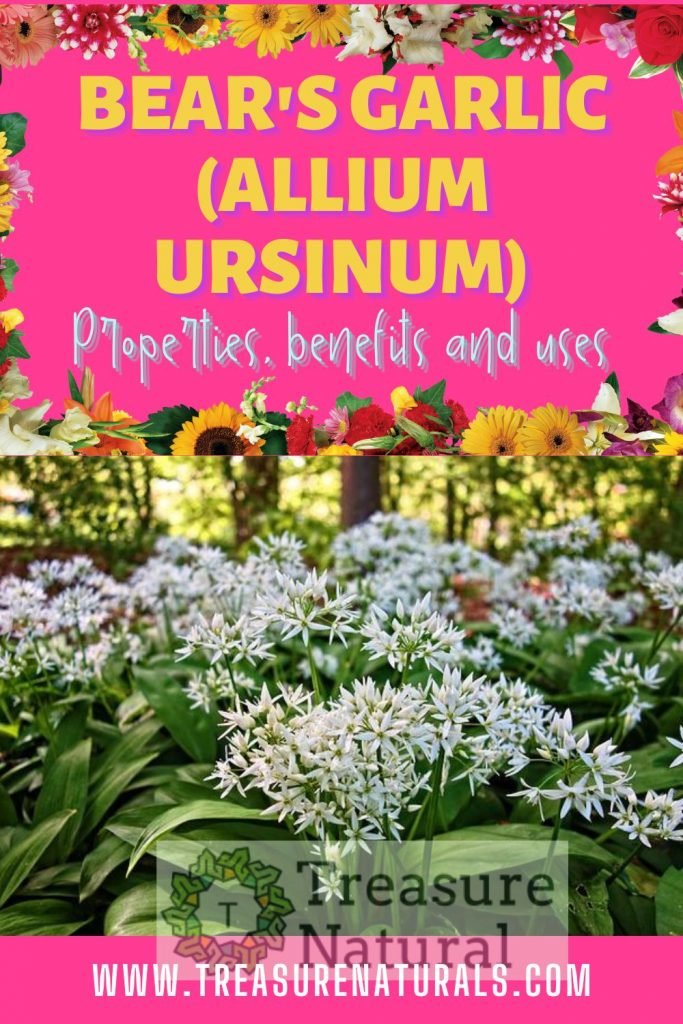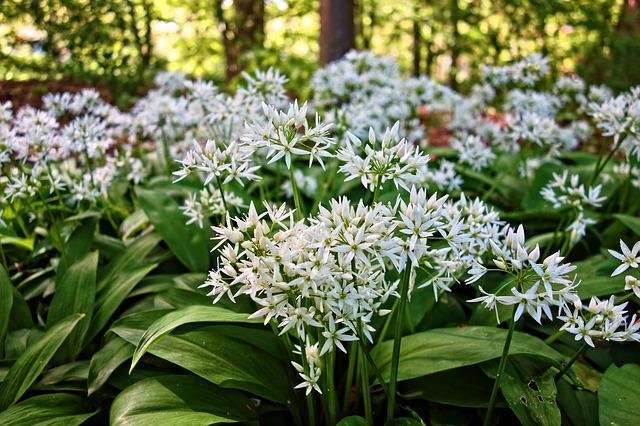
Let’s go to the discovery of wild garlic, the wild variant of the most properly known garlic: it is a plant that has different properties and ways of use all to be discovered.
Upright and elegant habit, lanceolate white flowers and large, very green foliage with a fleshy consistency, is the bear’s garlic (Allium ursinum), a perennial herbaceous bulbous plant that owes its name to the characteristic pungent odor reminiscent of that of garlic.
Characteristics of wild garlic
This aromatic spontaneous herb so pleasant to the appearance – so much so that it can also be grown as an ornamental plant in gardens and flower beds – is the favorite food of bears who, as soon as they wake up from the long winter hibernation, gulp down large quantities to regain their strength and reactivate their vital functions (hence the name ‘bear’).
Widespread in humid places, in meadows, next to streams, lakes and shady woods, bear’s garlic blooms in spring and has been known since ancient times for its many beneficial properties.
The use and cultivation of this bulb has been known for at least 3,000 years. Celts, Romans and Greeks were the first to discover its many uses (both culinary and therapeutic) and to pass them on to the present day.
In local dialects, wild garlic is known by several funny names and appellations, including: strozzagallin (Lombardy), ai de can (Veneto), cipudda di serpi (Sicily), jagghie servagge (Sardinia).
The properties of wild garlic
The populations of the Nordic countries use it in various medicinal preparations for its beneficial properties indicated for the whole organism.
Bulbs, leaves, flowers and fruits can be used for infusions, omelettes, beauty masks, soups, etc.
The strong antibiotic action (much more effective than that of traditional garlic) is accompanied by the ability, tested and verified, of wild garlic to lower bad cholesterol present in the blood.
Furthermore, it has a powerful purifying, antifungal and antifungal action and is able to reduce the presence of heavy metals in the blood.
In addition to being a natural concentrate of vitamins, mineral salts and hormones, wild garlic is able to regulate the heartbeat, promote the correct functioning of the kidneys, prevent hair loss, soothe and purify the skin in depth.
Recipes with a ramson
Easy to find in Italian woods and in very humid soils in general, wild garlic is a spontaneous herb perfect for a wide variety of culinary preparations.
Among these, the sauces for dressing meats and soups, salads and savory omelettes stand out. Let’s see some of them below.
Wild garlic pesto
Among all, however, wild garlic lends itself particularly well to the preparation of the classic pesto in a much more delicate and refined version than that obtained by using the more traditional garlic.
Tip: also discover our classic recipe for Genoese pesto based on basil and pine nuts
To prepare the wild garlic pesto you will need about thirty tender leaves, preferably harvested before the flowering of the plant which generally takes place from the end of March to May. Even in the absence of white inflorescences, recognizing wild garlic will not be difficult given the pungent odor emanating from its foliage but which is also able to protect nearby plants from attack by parasites.
The ingredients to prepare our pesto are:
- 500 gr of wild garlic leaves
- 250 ml of extra virgin olive oil
- 80 gr of Parmesan cheese
- 100 gr of chopped walnuts
Preparation:
- Wash and dry the wild garlic leaves and crush them in a mortar or mixer with walnuts, parmesan, season with salt and pepper and pour a drizzle of oil.
- Blend (or pound) everything and pour in the olive oil if the mixture is too dry or grainy.
- It must be homogeneous and well blended, creamy and consistent. If necessary, add more oil or cheese to obtain the desired consistency.
- For the optimal conservation of the pesto you can use an airtight jar that you will fill to the brim by pouring a drizzle of oil over it. In a cool and dry place, your pesto can be stored for a whole year.
Wild garlic: uses in cosmetics

If in the kitchen the most used part is certainly the bulb, leaves and flowers of bear’s garlic find many applications in cosmetics and herbal medicine.
In fact, they are perfect for obtaining infusions or herbal teas, and alternatively they can be chopped and mixed with distilled water to create tonics or white yogurt for a soothing and purifying beauty mask, very effective for fighting and preventing the classic skin imperfections. (blackheads, boils, skin spots).






